- You are here:
- Home »
- Coaching
Category Archives for Coaching
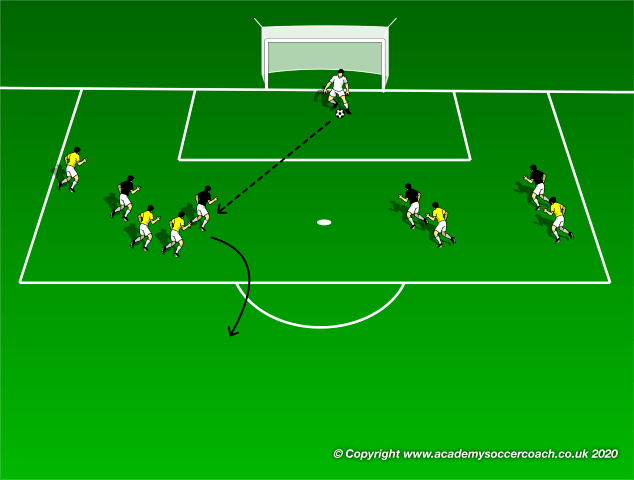
Box Breakout Game For Defending
By Matthew Carroll –
Description: This drill can be used to train defenders to be able to play under pressure near their own goal with confidence and to utilize the keeper in the build up. It forces players to take on 1v1 duels with the added pressure that if they lose the ball or do not immediately pressure and win the ball back they will let up a goal.
Setup: Place 4 field players and a goalie into the 18, Place 5-7 defenders outside the 18. Play should start from the goalkeeper who should have a stock of balls.
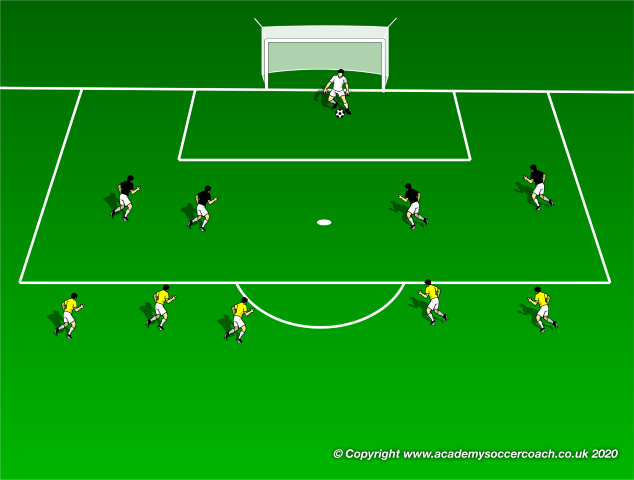
Execution: Play starts when the goalie rolls the ball out to one of the players in the 18.The defenders cannot enter the box until one of the players in the 18 first touches the ball. Once play starts the defenders attempt to win the ball and score on the goal.
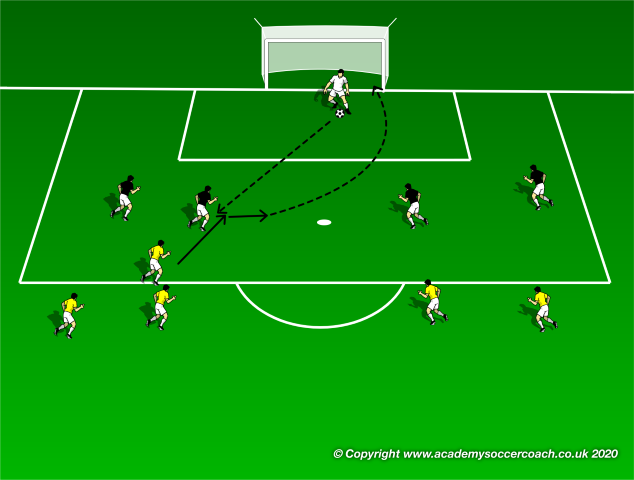
The players in the box win the game by dribbling out of the 18 with control. Play then resets with the defenders leaving the box and the goalie restarting the ball.

Variations: Breakout goals can be added as targets for the players in the box to score on. To increase intensity, after a game ends, a new set of attackers and defenders can be added to give breaks to each group.
By Matthew Carroll
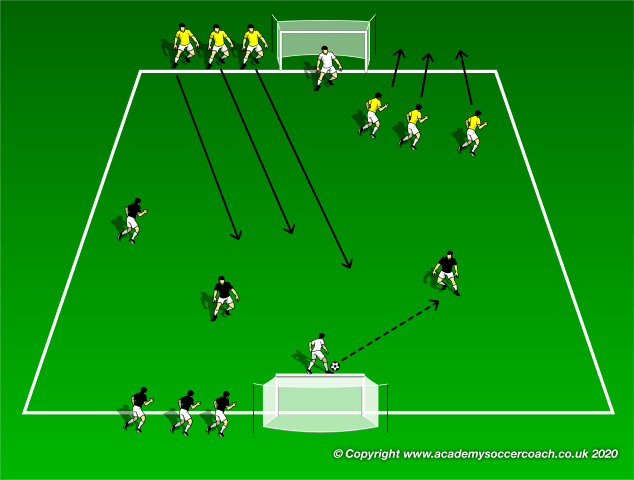
Transitions with Overlaps
By Matthew Carroll –
Description: This is a twist on the classic transition game that helps players recognize opportunities to overlap within a game. Coaches should allow the game to start off naturally, and then stop midway through to ask players to identify when overlapping was effective, and when it was ineffective because they were forcing overlaps for the sake of the drill. Players will naturally realize long overlaps are good for wide spaces to exploit the compactness of the opposing defense, and short, quick overlaps are better for the midfield or creating a shooting opportunity.
Setup: Set up two goals about 40 feet apart. Width can be as wide as the touch lines or cones can be added to restrict the width. A minimum of four teams are created with a goalie in each net. Place a large amount of balls in each net. A team should be placed at each post and teams on the same post should be wearing the same color, or every individual team can be wearing a different color.
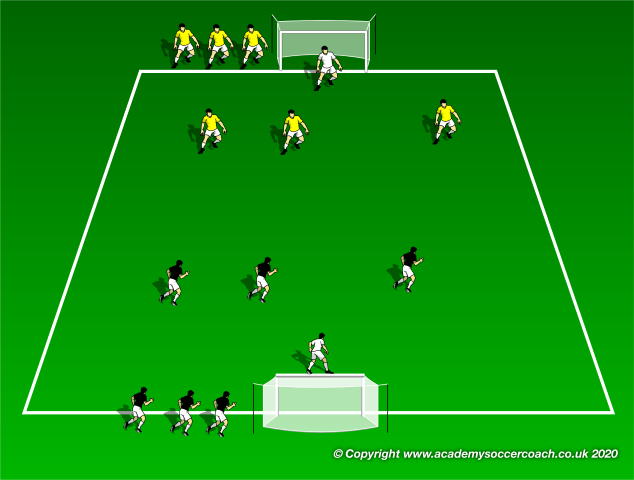
Execution: The game starts with one team from either goal in the field of play, attempting to score on net. Teams cannot score unless an overlap occurs at some point in the game, the coach can even become more specific requiring a certain type of overlap, or one that occurs on a certain part of the field. The game ends when a team scores, or a team shoots and misses.
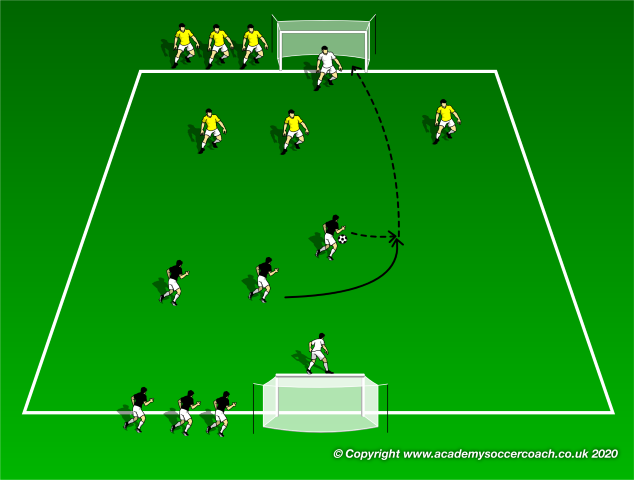
If a team scores they run back to their net and get a ball out of the goal to restart play, and must find a new overlap before scoring. The team that got scored on leaves the field and the team standing by the post then comes on and also must find an overlap before scoring. If a team misses a shot, the team that misses the shot leaves the field and the defending team stays on with the same requirements.

Variations: Specific overlaps can be required, or that they occur on a certain part of the field. Number of players per team/numbers of teams can vary. Size of the field can also be varied. A rule can be added that a team that has not completed their overlap can score if they intercept the opposition’s overlap and score from that possession.
By Matthew Carroll
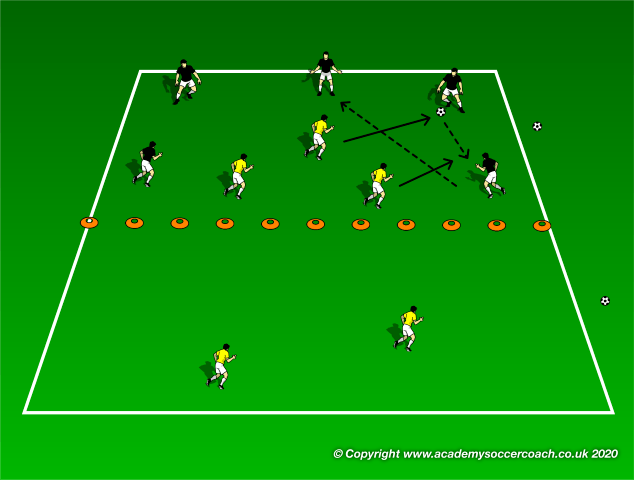
5v5 Transition Game
By Matthew Carroll –
Description: This is a great drill for teaching transition moments both offensively and defensively. There are opportunities to discuss counter pressing, transitional passing patterns, width, depth, and can even be used as a game day warm up to start players focusing on the flow of the upcoming game.
Setup: Create a 40×20 grid then split that evenly to create two 20×20 grids. Place five players from one team in one grid, with three opposition players with them. In the empty grid place the two remaining players. Have some balls near each grid to create a clear transition when the ball goes out.
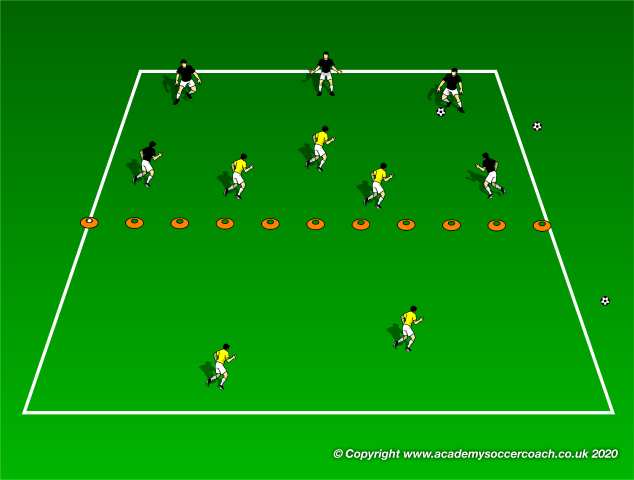
Execution: The game starts when the coach plays the ball to the five person team, the three person team attempts to press and win the ball back.

If the defending team wins the ball their objective is to move the ball to the other two players in the other grid. Once they do so they want to quickly create width and have all players in a large rondo. The team that has lost the ball initially wants to press the ball so it cannot go into the other grid. If it does though, the team that lost the ball then must send three players over to try to win the ball back, leaving two players behind for when they win and transition back.
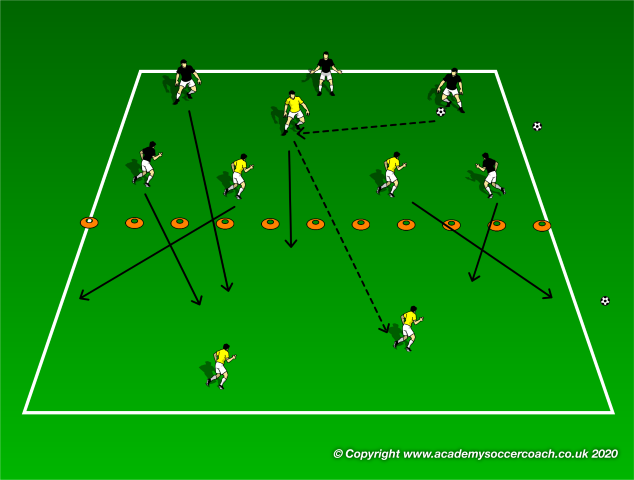
Variations:
The number of players that are in each grid/are allowed to defend can be modified
Winning conditions can be added such as fastest transitions, most time spent on the ball, most transitions, etc.
By Matthew Carroll
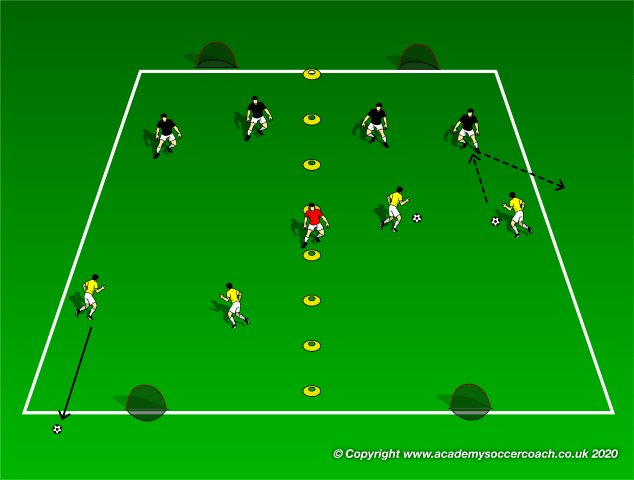
Side by Side Transition Game
By Matthew Carroll –
Description: This small sided game is used to improve game and spatial awareness with a focus on utilizing the 6 to switch play. It can also be used to teach defensive positioning and 1v1s
Setup: Create two grids that are connected in the middle. The size of the grid should be determined by the number of players and their skill level. Create two teams to play each other, then split those teams in two so team 1A will face team 2A and 1B will face 2B. Place one or two neutral players on the line that divides the grids. Place small sided goals at either end of each grid.
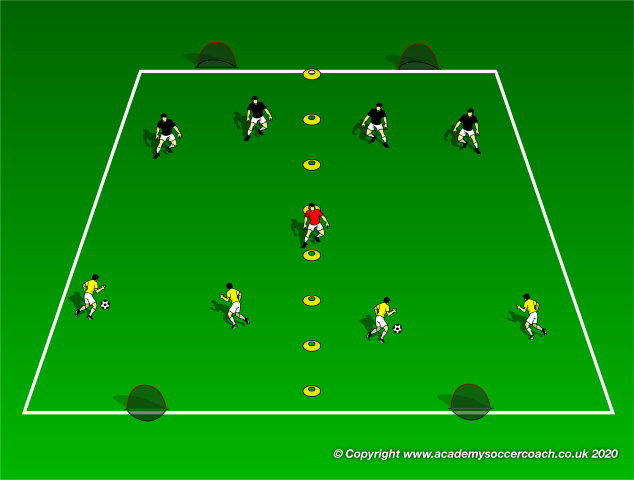
Execution: Play starts with a ball in each grid. Both teams play a small sided game against each other in their own grids. The neutral player, representing the 6, can receive the ball and either play it back into the grid where the ball came from or transition the ball to the opposite grid to the same team he received from the other grid.
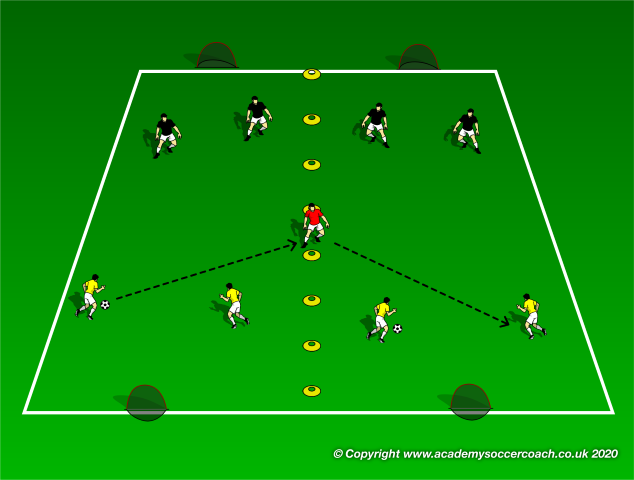
Once this happens the grid with two balls plays the game with both until a ball goes out, once one ball goes out the ball starts on the opposite grid with the team who should have possession on the other grid.

Winner is the team that has the most combined goals between the two grids.
Variations:
Depending on the system of the team, additional 6s can be added to more realistically depict the system
An additional stipulation can be added that as soon as the ball enters the opposite grid, that grid plays with the two balls, and the grid with none picks up another ball, this can continue as long as the balls stay in bounds, once they go out they stay out unless the grid has 0 balls in play.
By Matthew Carroll
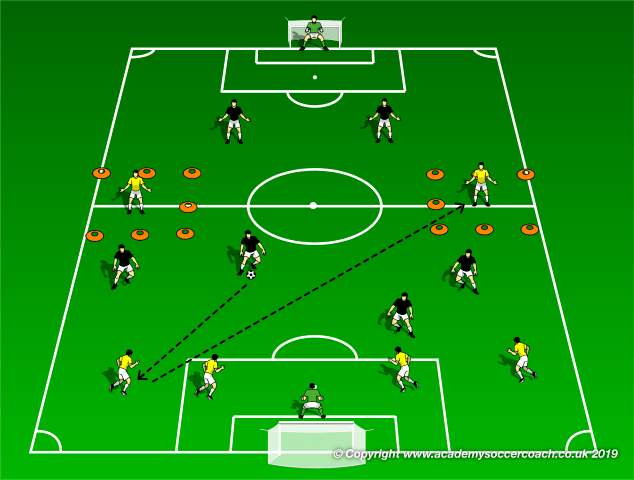
Diagonal Transition Game
By Matthew Carroll –
Description:
The Purpose of the Diagonal Transition Game is to develop, in a game like setting, player’s recognition of opportunities to play long diagonal balls on the counter to open up space on the opposite field for 1v1 situations of a striker against a outside back.
Setup:
Play on either full sided pitch or on condensed one with equal number of players facing off on even numbers on one side of the pitch. Two players on the defending team are placed in 15×15 grids that are “no fly zones'” for the opposition. Two players of the attacking team are placed on the opposite end as counter breakers
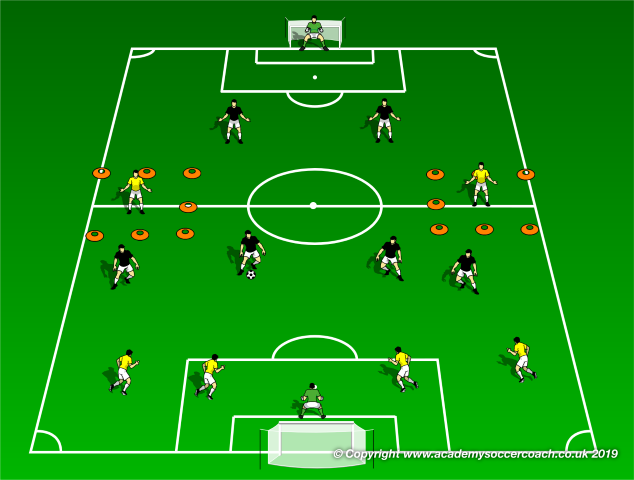
Execution:
The Attacking team goes towards goal attempting to score. If they score they maintain possession via a goalie throw to the halfway line. If the defending team wins the ball they are encouraged to play diagonal to one of the players in the “no fly grids” to spark counter attacks.

If unsuccessful the attacking team starts over again with a kick or a throw. If successful (ball lands in grid and grid player controls it) the two grid players then can enter the opposing territory, as well as two from the previous attacking team and two from the defending team creating a 4v4 on the opposite side.
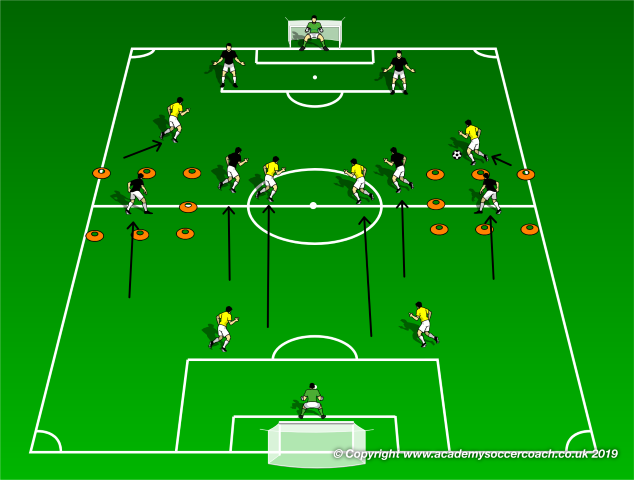
Variations:
Number of players, size of grids, and size of the field can all change.
By Matthew Carroll
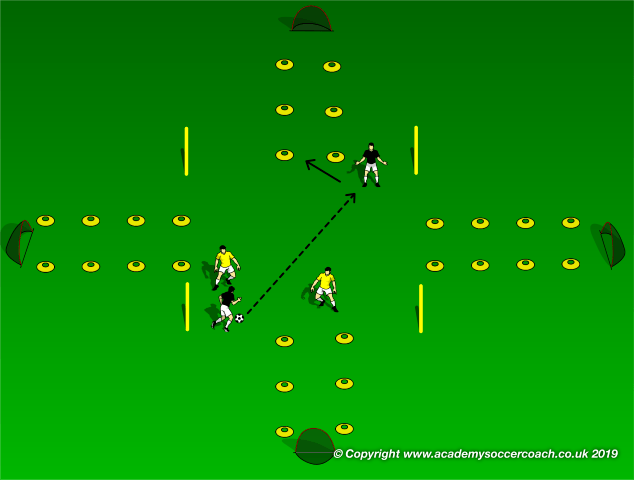
Swiss Flag Four Corners Game
By Matthew Carroll –
Description:
The Swiss Four Corners drill is similar to the normal four corners game except that instead of being a large grid it has four channels, similar to the shape of the Swiss flag. The purpose of these channels is to create opportunities for players to possess through the middle in a tightly contested area, then find long diagonals towards space on the opposite side
Setup:
Set up a grid with a central grid, and four long channels on each side. The size of the grid and channels is dependent on age, skill, and number of players. At the end of each grid add a small goal. Split the group into two teams each defending goals opposite of each other.
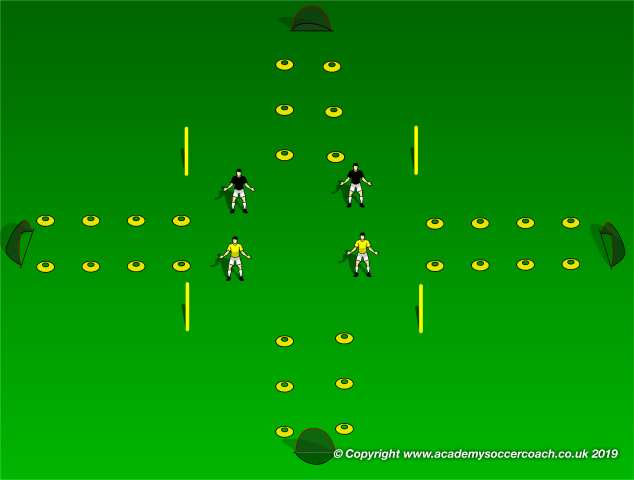
Execution:
Each team attempts to score on one of the opponents goals. The focus should be to draw the oppositions defense to one side and then switch fields to attack the vulnerable goal on the other side. All restarts come from the coaches as a 50/50 ball thrown or kicked into the center of the grid.

Variations:
Restarts can be adapted to the goal of the session
A third team can be added to create an overload for one team
Grid dimensions can be altered, or additional channels added
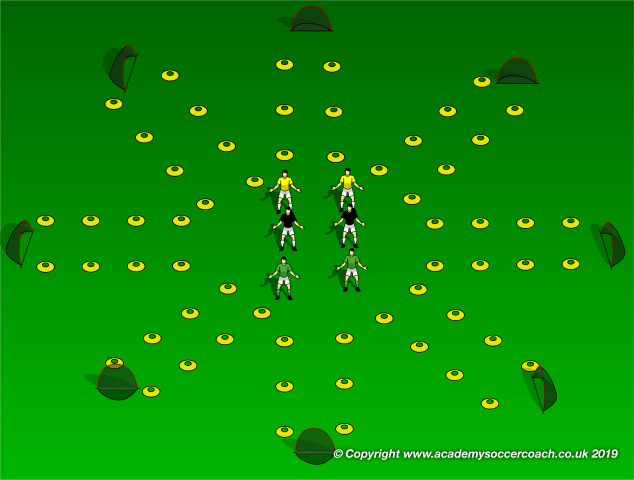
By Matthew Carroll
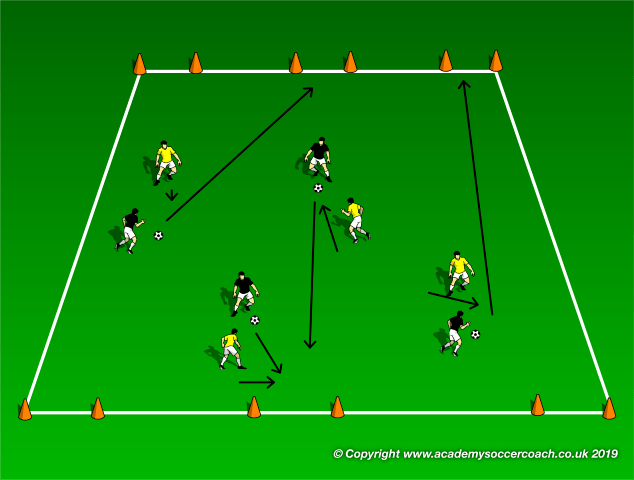
1v1 End Zone Game
By Matthew Carroll –
Description:
The 1v1 End Zone Game is meant to create a situation where players are competing in 1v1 situations, both offensive and defensive, but are forced to be spatially aware of three different areas they can score in, as well as adjusting to the traffic of the other players in the grid to recreate a series of highly realistic 1v1 duel situations.
Setup:
Create a grid (size dependent on number of players) with three end zone areas at both end. Every player then will pair up and have a ball between them. If the numbers are uneven one player can act as a “destroyer” player who creates 1v2 situations across the grid. Players should be spread out across the grid and each pair should decide who starts with ball.
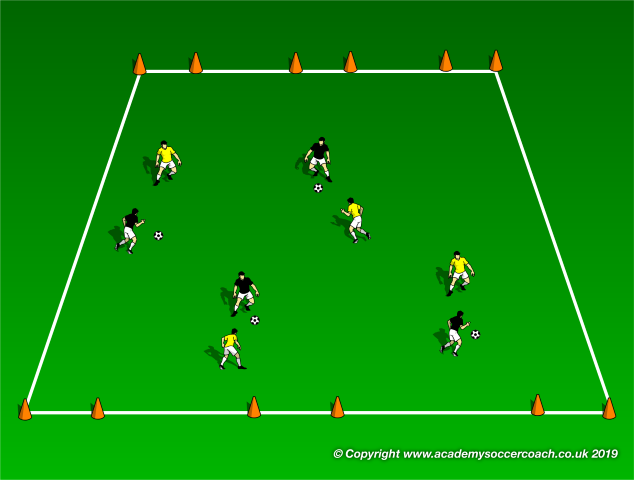
Execution:
On the coaches whistle the player on the ball attempts to dribble towards their designated end zone. If they are able to enter one of the three end zones successfully under control they earn a point.

They then turn around and attempt to reach the opposite end zone “make it- take it” style. If the defender is able to win the ball they then begin to go to the opposite end zone that the their opposition was trying to score on. Games should last between 30 seconds to 2 minutes. After the game the player with the most points wins.
Variations:
-The odd man out can be used as a bumper player rather than “destroyer”
-Players can switch possession after a score rather than the make it-take it style
-After each round players can switch partners to deal with a variety of offensive moves and defensive styles
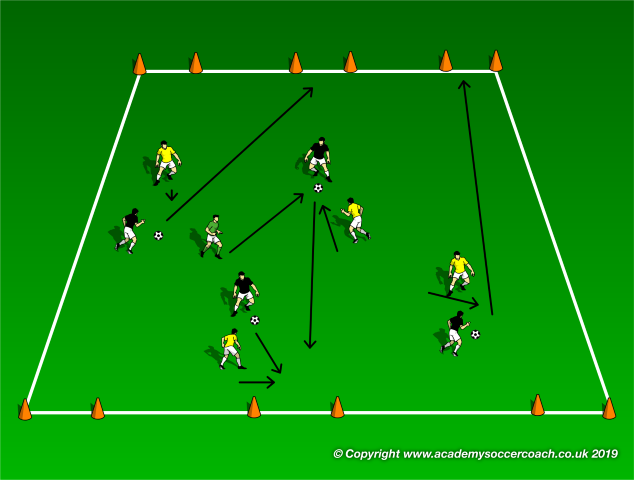
By Matthew Carroll
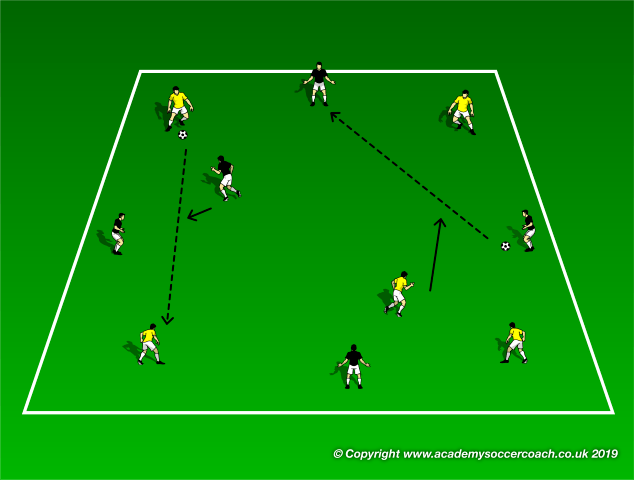
Two Team Rondo
By Matthew Carroll –
Description:
The purpose of the Two Team Rondo is to create a Rondo activity that involves increased levels of chaos by reducing space and increasing the number of participants in the average rondo.
Setup:
Two teams set up a rondo, every other person in the rondo is on one team, and vice versa for the other team. Each team has a player is in the middle. Two balls are in play simultaneously.
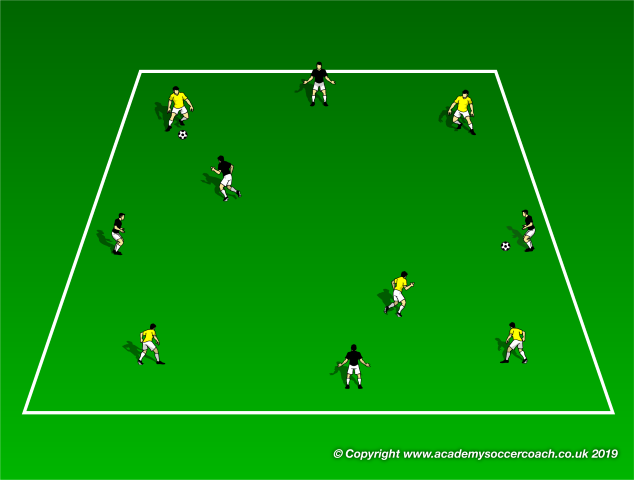
Execution:
Two balls are in play at once, with each team focusing on trying to gain possession of both balls at the same time.

If the player in the middle is able to win possession they pass to their teammates and that team is now in possession of balls. Players on the outer circle cannot try to win the ball off their opposition, but can intercept passes that come near them.
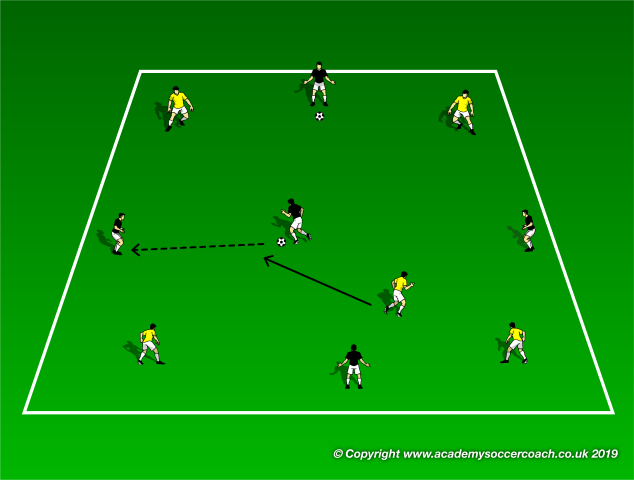
Variations:
The game can become more competition based by adding stipulations such as the team that holds possession of both balls the longest wins, a team needs to do pushups every time the lose possession, etc.
By Matthew Carroll
